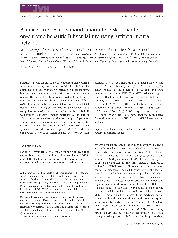摘要
Model for end-stage liver disease (MELD) scoring was initiated using traditional statistical technique by assuming a linear relationship between clinical features, but most phenomena in a clinical situation are not linearly related. The aim of this study was to predict 3-month mortality risk of acute-on-chronic hepatitis B liver failure (ACHBLF) on an individual patient level using an artificial neural network (ANN) system. The ANN model was built using data from 402 consecutive patients with ACHBLF. It was trained to predict 3-month mortality by the data of 280 patients and validated by the remaining 122 patients. The area under the curve of receiver operating characteristic (AUROC) was calculated for ANN and MELD-based scoring systems. The following variables age (P<0.001), prothrombin activity (P<0.001), serum sodium (P < 0.001), total bilirubin (P=0.015), hepatitis B e antigen positivity rate (P<0.001) and haemoglobin (P<0.001) were significantly related to the prognosis of ACHBLF and were selected to build the ANN. The ANN performed significantly better than MELD-based scoring systems both in the training cohort (AUROC=0.869 vs 0.667, 0.591, 0.643, 0.571 and 0.577; P<0.001, respectively) and in the validation cohort (AUROC=0.765 vs 0.599, 0.563, 0.601, 0.521 and 0.540; P0.006, respectively). Thus, the ANN model was shown to be more accurate in predicting 3-month mortality of ACHBLF than MELD-based scoring systems.
